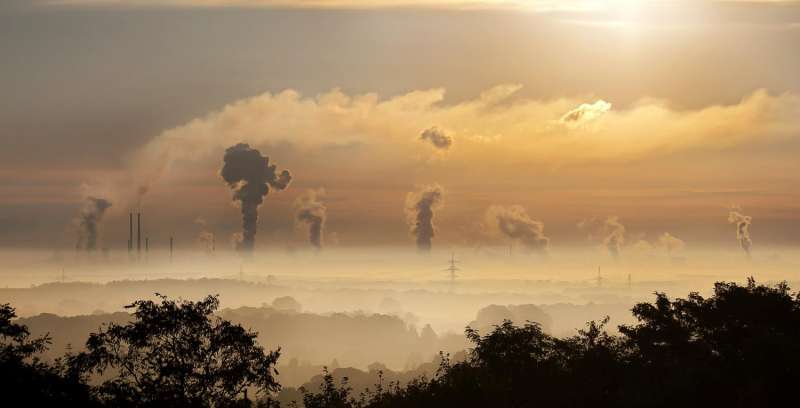High chance that current atmospheric greenhouse gases commit to warmings greater than 1.5C over land: study

Current levels of atmospheric greenhouse gas concentrations already commit the planet to air temperatures over many land regions being eventually warmed by greater than 1.5°C, according to new research published today (27 July 2016) in the journal Scientific Reports.
The results of the new study have implications for international discussions of what constitutes safe global temperature thresholds, such as 1.5°C or 2°C of warming since pre-industrial times. The expected extra warming over land will influence how we need to design some cities. It could also impact on the responses of trees and plants, and including crops.
The research was carried out by scientists from the UK's Centre for Ecology & Hydrology and the University of Exeter, UK.
The research team found two main reasons behind the result.
First, even if it was possible to keep carbon dioxide concentrations fixed at their current 400 parts-per-million concentration levels, then the planet would continue to warm towards new equilibrium higher temperatures. At present, the climate is out of equilibrium, with the oceans drawing down very large amounts of heat from the atmosphere. However this will decline as the planet is bought towards a stable climatic state.
Second, warming rates over land are far higher than those when averaged globally which include temperatures over the oceans. This is a feature observed in meteorological measurements and reproduced across a large suite of climate models.
Lead author Dr Chris Huntingford from the Centre for Ecology & Hydrology said, "It would certainly be inappropriate to create any additional fear over climate change. However, what this paper does is re-iterate that the oceans are currently acting as a very strong sink of heat. Even if carbon dioxide was somehow stabilised at current levels, additional warming will occur as we move towards an equilibrium climate state. Furthermore, both data and computer models all indicate enhanced temperatures over land, compared to global mean warming that includes temperatures over the oceans."
Co-author Dr Lina Mercado, Senior Lecturer in Physical Geography at the University of Exeter, said, "Our findings suggest that we are committed to land temperatures in excess of 1.5°C across many regions at present-day levels of greenhouses gases. It is therefore imperative to understand its consequences for our health, infrastructure and ecosystem services upon which we all rely."
Dr Chris Huntingford added, "Central to our methodology is analysis of predictions made by a large number of independent climate research centres from around the world. Although many simulations exist for climate stabilisation, these tend to be at future higher greenhouse gas concentrations. We were able to scale these back to see the warming levels we are already committed to, even if present-day concentrations increased no further. Such computer models capture how the ocean heat sink would be slowly lost as a stable climate is approached, implying that temperatures would continue to increase temporarily even if greenhouse concentrations were fixed at current levels."
More information: Huntingford, C. and Mercado, L. M. High chance that current atmospheric greenhouse concentrations commit to warmings greater than 1.5 °C over land. Scientific Reports 6, 30294; DOI: 10.1038/srep30294
Journal information: Scientific Reports
Provided by Centre for Ecology & Hydrology



















